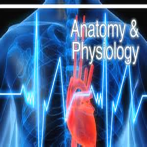Anatomy And Physiology
Anatomy is the branch of biology concerned with the study of the structure of animals and their parts; it is also referred to as zootomy to separate it from human anatomy. In some of its facets, anatomy is related to embryology and comparative anatomy, which itself is closely related to evolutionary biology and phylogeny.[1] Human anatomy is one of the basic essential sciences of medicine.
The discipline of anatomy is divided into macroscopic and microscopic anatomy. Macroscopic anatomy, or gross anatomy, is the examination of an animal’s body parts using unaided eyesight. Gross anatomy also includes the branch of superficial anatomy. Microscopic anatomy involves the use of optical instruments in the study of the tissues of various structures, known as histology and also in the study of cells.
The history of anatomy is characterized by a progressive understanding of the functions of the organs and structures of the human body. Methods have also improved dramatically, advancing from the examination of animals by dissection of carcasses and cadavers (corpses) to 20th century medical imaging techniques including X-ray, ultrasound, and magnetic resonance imaging.
anatomy is the scientific study of the structure of organisms including their systems, organs and tissues. It includes the appearance and position of the various parts, the materials from which they are composed, their locations and their relationships with other parts. Anatomy is quite distinct from physiology and biochemistry, which deal respectively with the functions of those parts and the chemical processes involved. For example, an anatomist is concerned with the shape, size, position, structure, blood supply and innervation of an organ such as the liver; while a physiologist is interested in the production of bile, the role of the liver in nutrition and the regulation of bodily functions.[3]
The discipline of anatomy can be subdivided into a number of branches including gross or macroscopic anatomy and microscopic anatomy.[4] Gross anatomy is the study of structures large enough to be seen with the naked eye, and also includes superficial anatomy or surface anatomy, the study by sight of the external body features. Microscopic anatomy is the study of structures on a microscopic scale, including histology (the study of tissues), and embryology (the study of an organism in its immature condition).[1]
Anatomy can be studied using both invasive and non-invasive methods with the goal of obtaining information about the structure and organization of organs and systems. Methods used include dissection, in which a body is opened and its organs studied, and endoscopy, in which a video camera-equipped instrument is inserted through a small incision in the body wall and used to explore the internal organs and other structures. Angiography using X-rays or magnetic resonance angiography are methods to visualize blood vessels.
The term "anatomy" is commonly taken to refer to human anatomy. However, substantially the same structures and tissues are found throughout the rest of the animal kingdom and the term also includes the anatomy of other animals. The term zootomy is also sometimes used to specifically refer to animals. The structure and tissues of plants are of a dissimilar nature and they are studied in plant anatomy.
Epithelial tissue is composed of closely packed cells, bound to each other by cell adhesion molecules, with little intercellular space. Epithelial cells can be squamous (flat), cuboidal or columnar and rest on a basal lamina, the upper layer of the basement membrane, the lower layer is the reticular lamina lying next to the connective tissue in the extracellular matrix secreted by the epithelial cells.
The discipline of anatomy is divided into macroscopic and microscopic anatomy. Macroscopic anatomy, or gross anatomy, is the examination of an animal’s body parts using unaided eyesight. Gross anatomy also includes the branch of superficial anatomy. Microscopic anatomy involves the use of optical instruments in the study of the tissues of various structures, known as histology and also in the study of cells.
The history of anatomy is characterized by a progressive understanding of the functions of the organs and structures of the human body. Methods have also improved dramatically, advancing from the examination of animals by dissection of carcasses and cadavers (corpses) to 20th century medical imaging techniques including X-ray, ultrasound, and magnetic resonance imaging.
anatomy is the scientific study of the structure of organisms including their systems, organs and tissues. It includes the appearance and position of the various parts, the materials from which they are composed, their locations and their relationships with other parts. Anatomy is quite distinct from physiology and biochemistry, which deal respectively with the functions of those parts and the chemical processes involved. For example, an anatomist is concerned with the shape, size, position, structure, blood supply and innervation of an organ such as the liver; while a physiologist is interested in the production of bile, the role of the liver in nutrition and the regulation of bodily functions.[3]
The discipline of anatomy can be subdivided into a number of branches including gross or macroscopic anatomy and microscopic anatomy.[4] Gross anatomy is the study of structures large enough to be seen with the naked eye, and also includes superficial anatomy or surface anatomy, the study by sight of the external body features. Microscopic anatomy is the study of structures on a microscopic scale, including histology (the study of tissues), and embryology (the study of an organism in its immature condition).[1]
Anatomy can be studied using both invasive and non-invasive methods with the goal of obtaining information about the structure and organization of organs and systems. Methods used include dissection, in which a body is opened and its organs studied, and endoscopy, in which a video camera-equipped instrument is inserted through a small incision in the body wall and used to explore the internal organs and other structures. Angiography using X-rays or magnetic resonance angiography are methods to visualize blood vessels.
The term "anatomy" is commonly taken to refer to human anatomy. However, substantially the same structures and tissues are found throughout the rest of the animal kingdom and the term also includes the anatomy of other animals. The term zootomy is also sometimes used to specifically refer to animals. The structure and tissues of plants are of a dissimilar nature and they are studied in plant anatomy.
Epithelial tissue is composed of closely packed cells, bound to each other by cell adhesion molecules, with little intercellular space. Epithelial cells can be squamous (flat), cuboidal or columnar and rest on a basal lamina, the upper layer of the basement membrane, the lower layer is the reticular lamina lying next to the connective tissue in the extracellular matrix secreted by the epithelial cells.
Category : Books & Reference

Related searches
Reviews (11)
Aka. T.
Sep 17, 2016
helpful, but it isn't very fast.
A. G. u.
Oct 13, 2016
Useful for every student and microbiologist.
Dil. W.
Apr 21, 2016
Pictures would be nice
AMA. R.
Jan 14, 2017
Best
ari. L.
Oct 20, 2015
thanks a lot...
Dev. A.
Aug 5, 2015
Love it
afr. u.
Nov 11, 2016
When I will try then I will tell u
A. G. u.
May 11, 2017
Nice. But requried many mangement
A. G. u.
Oct 31, 2016
It has more consept
Saa. A.
Sep 3, 2015
So interested





As a matter of fact,this app is very useful. Try it